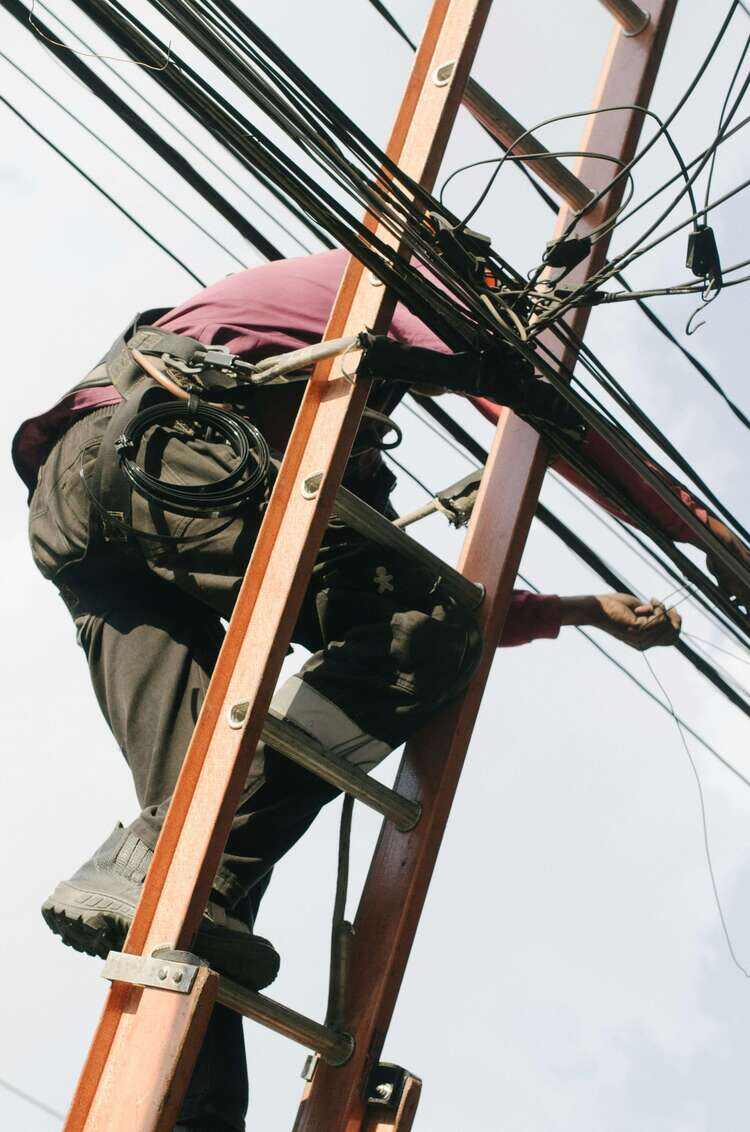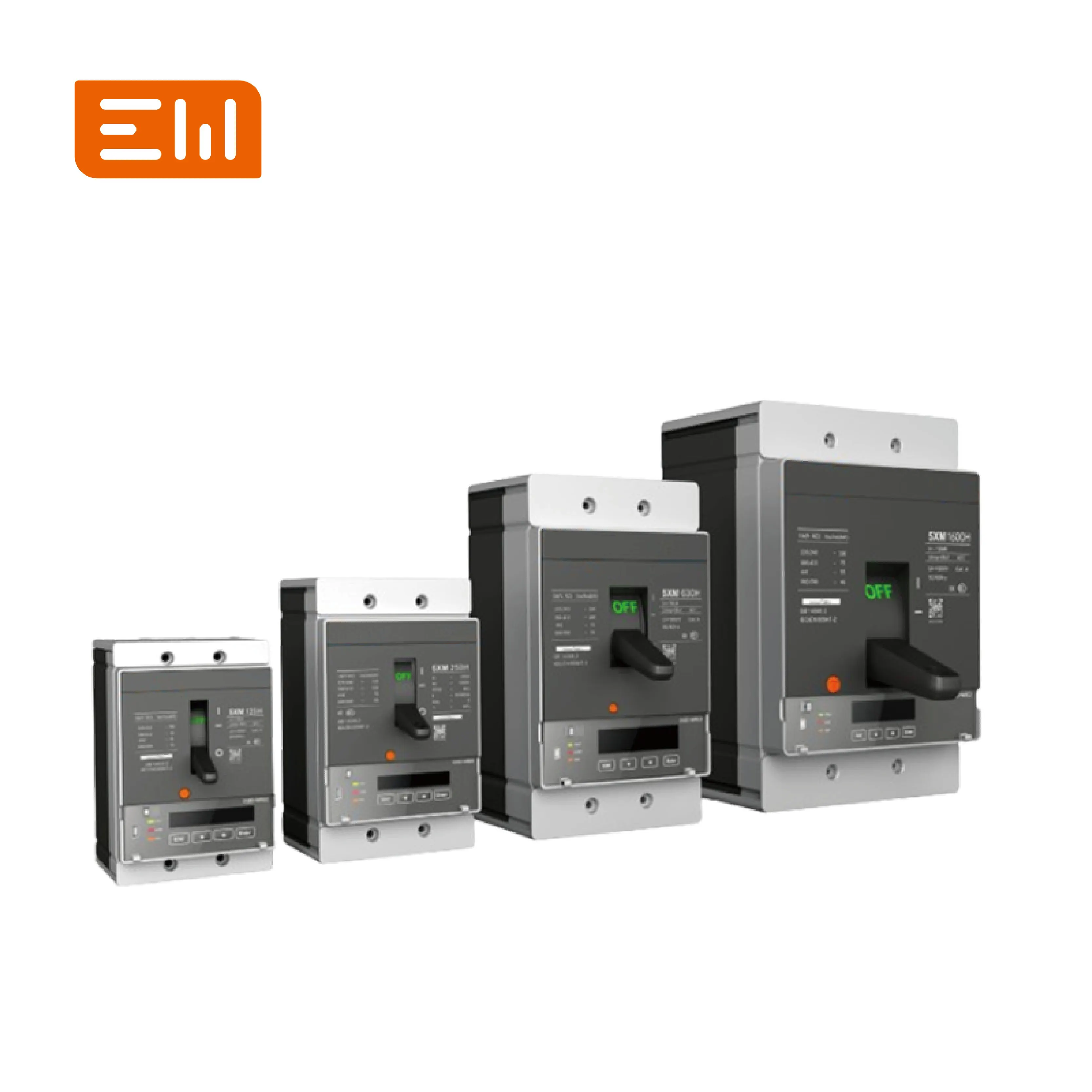Understanding Miniature, 15 Amp, and Air Circuit Breaker: Replacement and Lockout Safety
First, let's look at miniature circuit breakers, often called MCBs. These are the most common types found in homes. They are small, which is why they're called "miniature," and typically used for lower voltage circuits, offering essential protection against overloads and short circuits.
Why Choose Miniature Circuit Breakers?
MCBs are popular for homes because they are very reliable. They react quickly to electrical faults, like too much current (overload) or a short circuit, by automatically shutting off the power. Plus, they're easy to reset – just flip the switch back on!
Advantages of Using MCBs
A key benefit of MCBs is how accurately they detect and respond to electrical problems. They have a clear on/off switch, making it simple to see which circuit has tripped. MCBs are also tougher than old-fashioned fuses and can handle being tripped and reset many times without wearing out. This means they last longer and need less maintenance.
Types of Miniature Circuit Breakers
MCBs come in different types based on their tripping characteristics and what they protect. Single-pole MCBs are common for regular household circuits (like lights and outlets). Double-pole MCBs protect appliances that use more power (like ovens or dryers). Three-pole MCBs are used in industrial settings with three-phase power. Knowing these types helps you choose the right MCB.
The 15 Amp Circuit Breaker
A very common type of MCB is the 15 amp circuit breaker. You'll often find these in a home's breaker panel (also called an electrical panel). It's designed for the standard electrical load of most lights and outlets. Take a look inside your breaker panel, and you'll likely see several 15 amp breakers.
Customizing Your Breaker Panel
While 15 amp breakers are standard, homeowners might mix different amperage MCBs in their panel for specific needs. Higher amp breakers might be used for heavy-duty appliances like air conditioners. Having the right mix of breakers makes your home's electrical system safer and more efficient.
Air Circuit Breakers (ACBs)
Now, let's discuss larger breakers: air circuit breakers, or ACBs. These are used in industrial places or big commercial buildings for high voltage circuits. They can handle much more power than home breakers.
How Air Circuit Breakers Work
ACBs use air to put out the electrical arc (the spark) created when the circuit is interrupted. An air chute often helps direct and cool the arc. They are very sturdy and built for repeated use. In factories or large offices, ACBs are essential for reliable and safe operation.
Key Features of Air Circuit Breakers
ACBs have features that make them reliable. Many have adjustable trip settings, so they can be set for specific circuit needs. They usually have a way to be operated manually for quick activation or deactivation. Their strong build makes them suitable for high-power environments.
Applications of Air Circuit Breakers
ACBs aren't just for factories. They are also vital parts of electrical grids and substations, managing power distribution. They help minimize power disruptions by quickly isolating faults.
Maintenance and Longevity of ACBs
Regular maintenance keeps ACBs working reliably for a long time. Inspections should check for wear, ensure parts are clean, and confirm trip settings are correct. Following a maintenance schedule helps prevent unexpected failures.
Mini Circuit Breakers (Compact Breakers)
You might think these are the same as MCBs, but they are slightly different. These compact breakers are often used for even lower voltage applications than standard MCBs, frequently found in specific equipment or small electrical devices.
Why Use Compact Breakers?
These small breakers are great for protecting smaller circuits. They are compact and efficient, perfect for gadgets or appliances with sensitive electronics where precise protection is needed.
Benefits of Compact Breakers
Their small size is a big advantage where space is limited. They offer precise protection, which is important for electronics easily damaged by power changes. They are usually easy to install.
Common Uses for Compact Breakers
These breakers are often used in consumer electronics like computers and TVs to protect against power surges. They're also found in cars, protecting vehicle electrical systems. In industry, they might be used in control panels.
Selecting the Right Compact Breaker
Choosing the right one means looking at the voltage and current needs of the device or circuit. Make sure the ratings match for effective protection. Consulting an expert can help you choose correctly.
How to Replace a Circuit Breaker

Sometimes, breakers need replacing if they're old or malfunctioning. Replacing one isn't as hard as it might seem, but safety is crucial.
Steps to Replace a Circuit Breaker
- Turn Off the Main Power: Safety first! Always cut power at the main switch in your breaker panel before working on wiring.
- Remove the Panel Cover: Carefully unscrew and remove the cover to access the breakers.
- Identify the Faulty Breaker: Find the breaker that needs replacing (often the one that tripped or looks damaged).
- Remove the Old Breaker: Disconnect the wire(s) and gently pull or rock the breaker out of its slot.
- Install the New Breaker: Connect the wire(s) to the new breaker and snap or slide it securely into the empty slot.
- Replace the Panel Cover: Screw the cover back on.
- Turn the Main Power Back On: Flip the main switch on and test the new breaker.
*(Note: The bolding inside the list item is for emphasis on the action step, not keyword stuffing)*
Ensuring Safety During Replacement
Working with electricity requires caution. Always use insulated tools. Wear rubber-soled shoes and stand on a dry, non-conductive surface. If you're unsure about any step, it's best to call a qualified electrician.
Troubleshooting After Replacement
If the new breaker trips right away, there might be an issue with the circuit itself (like a short circuit or overload). Double-check your connections and ensure the breaker's amp rating is correct for the circuit. If problems continue, you may need a professional to diagnose the issue.
Tools Needed
Having the right tools makes the job easier: a screwdriver set, a voltage tester (to confirm power is off), and perhaps wire strippers. A flashlight or headlamp is helpful.
Circuit Breaker Lockout
Safety is extremely important when working on electrical systems. That's where circuit breaker lockout devices come in. These safety tools prevent a breaker from being accidentally turned back on during maintenance.
How Do Circuit Breaker Lockout Devices Work?
A lockout device physically blocks the breaker's switch, keeping it in the "off" position. It's usually secured with a padlock. This prevents accidental energizing while someone is working, protecting them from electric shock.
Types of Circuit Breaker Lockout Devices
Various lockout devices exist:
- Snap-on lockouts: Easy to use for standard single-pole breakers.
- Clamp-on lockouts: More versatile, often using a thumbscrew to grip tight onto the breaker handle, suitable for single or multi-pole breakers.
- Multi-pole specific lockouts: Designed to lock out breakers with tie bars.
Choosing the right type depends on the breaker style in your breaker panel.
Importance of Lockout/Tagout (LOTO)
Using circuit breaker lockout devices is part of a broader safety procedure called Lockout/Tagout (LOTO). This involves locking the energy source (the breaker) and placing a tag indicating that work is being done and the device should not be operated. LOTO is critical for workplace safety during electrical maintenance.
Implementing Lockouts in Workplaces
Workplaces must train employees on how to use lockout devices correctly and follow LOTO procedures. Regular checks ensure these safety rules are followed, creating a safer work environment.
Conclusion
So there's an overview of different circuit breakers. From the miniature circuit breakers in your home's breaker panel to air circuit breakers in industrial settings, understanding them helps keep electrical systems safe and reliable. You can explore a variety of circuit breakers for different needs on our products page. Remember, when dealing with replacing breakers or using circuit breaker lockout devices, safety comes first. If in doubt, always call a professional electrician. Stay safe!

